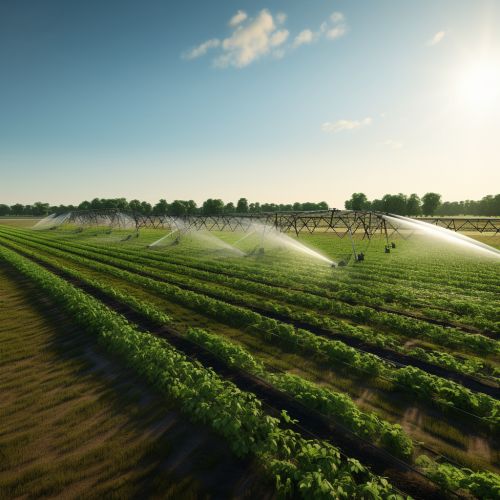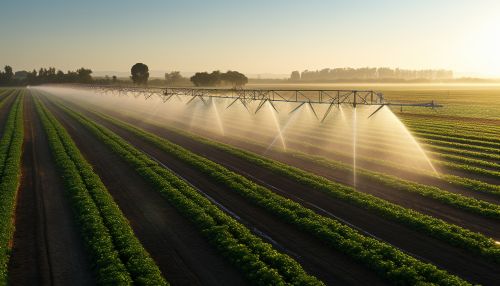Lateral Move Irrigation
Overview
Lateral move irrigation, also known as linear move, wheelmove, or side-roll irrigation, is a method of irrigation where the equipment rotates around a pivot and builds up a circular pattern in a field. It is a popular method used in large-scale agriculture, particularly in areas with flat terrain and a consistent water supply.


History
The concept of lateral move irrigation was first developed in the United States during the 1940s. The initial designs were crude and inefficient, but over the decades, improvements in technology and understanding of irrigation principles led to the development of more efficient and effective systems.
Design and Operation
A lateral move irrigation system consists of a series of connected sprinklers, usually mounted on wheeled towers, that move across a field in a straight line, irrigating a rectangular area. The system is powered by a series of electric motors, which drive the wheels and the sprinkler system. The water is typically supplied by a flexible hose, which is connected to a water source at one end of the field.
The system is controlled by a computer, which can be programmed to adjust the speed of the system, the amount of water applied, and the timing of the irrigation. This allows for precise control over the irrigation process, ensuring that the crops receive the right amount of water at the right time.
Advantages
There are several advantages to using a lateral move irrigation system. One of the main benefits is that it allows for efficient use of water. Because the system moves across the field, it can apply water evenly over the entire area, reducing the risk of over- or under-watering. This can lead to improved crop yields and reduced water usage.
Another advantage is that the system can be automated, allowing for less manual labor and more precise control over the irrigation process. This can be particularly beneficial in large-scale farming operations, where managing the irrigation process manually can be time-consuming and labor-intensive.
Disadvantages
Despite its advantages, there are also some disadvantages to using a lateral move irrigation system. One of the main drawbacks is the initial cost. These systems can be expensive to install, particularly on a large scale. However, the increased efficiency and potential for improved crop yields can often offset this initial investment over time.
Another potential disadvantage is the need for a flat terrain. Lateral move irrigation systems work best on flat or gently sloping fields. If the terrain is too steep, the system may not be able to move properly, and the water distribution may be uneven.
Applications
Lateral move irrigation systems are used in a variety of agricultural settings. They are particularly popular in large-scale farming operations, such as those found in the United States, Australia, and other countries with large agricultural sectors. These systems are also used in smaller-scale farming operations, where their efficiency and automation can be particularly beneficial.
Future Developments
As technology continues to advance, it is likely that lateral move irrigation systems will become even more efficient and effective. Developments in computer technology and sensor technology could allow for even more precise control over the irrigation process, potentially leading to further improvements in crop yields and water usage.
